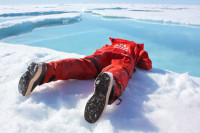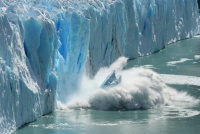



Disability Awareness is off this week, instead we present this special program:
The Arctic is now warming twice as fast as the global average. That's the finding in the 11th Arctic Report Card released on December 13, 2016, at the annual American Geophysical Union meeting in San Francisco. NOAAs Arctic Research Program Director, Jeremy Mathis, said about the year 2016: Rarely have we seen the Arctic show a clearer, stronger or more pronounced signal of persistent warming and its cascading effects on the environment than this year.
The Arctic Report Card, by a team of 61 scientists from 11 nations, lists the many ways in which the warming Arctic affects sea level rise, ocean and air circulation as well as weather in the Northern Hemisphere and beyond.
The warming Arctic oceans lead to melting of permafrost on land and affect the Greenland ice sheet. A surprise for scientists was that a warming Arctic also changes the ocean currents in the Northern Hemisphere and even the wind currents.
NOAA, the National Oceanic and Atmospheric Administration, has presented Arctic Report Cards for 10 years. The American Geophysical Union (AGU) is an organization of geophysicists from 144 countries. Geophysical sciences involve atmospheric and ocean sciences, as well as earth and space.




